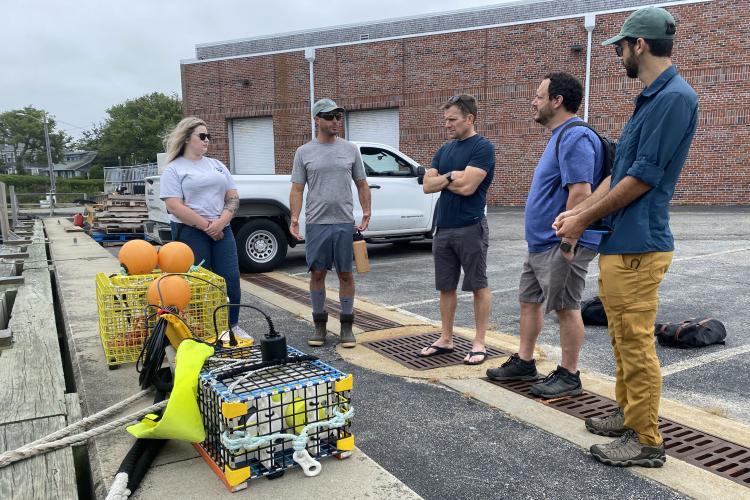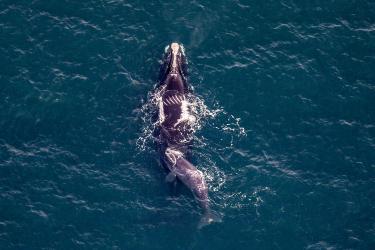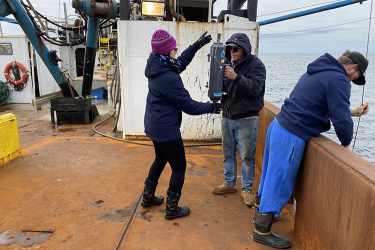On-demand fishing removes the threat of entanglement posed by vertical buoy lines. This solution could help save North Atlantic right whales from extinction while supporting coastal fishing communities. A major obstacle to moving this effort forward is the need to develop an affordable system to track gear deployments in the ocean. We also need to make their locations known to the fishermen, enforcement agencies, and nearby vessels.
NOAA Fisheries has been collaborating with the Allen Institute for Artificial Intelligence. We are harnessing their EarthRanger platform to integrate gear deployments from multiple manufacturers into a centralized cloud database and display.
Testing EarthRanger’s Capabilities
A large community of stakeholders went out in Cape Cod Bay to test the visibility of gear deployments with the visiting EarthRanger team on July 26, 2022. The teams were divided between two commercial fishing vessels. They deployed gear within a few miles of each other to test the functionality of sharing positions of gear made by different manufacturers.
On-demand fishing gear was deployed from an EdgeTech system, and from the SMELTS lift bag system with Teledyne acoustics and Blue Ocean Gear buoys. They monitored the speed with which positions were resolved in the EdgeTech Trap Tracker app and the EarthRanger platform.
Seeing gear deployments from different manufacturers appear within minutes on the same interface was a huge step forward in the development of on-demand fishing gear. It was very encouraging for our ability to resolve the challenges associated with geolocation in the absence of a surface buoy. We were impressed with the speed at which gear positions were marked and resolved from the display.
Getting all of these diverse stakeholders out on the water together provided important opportunities to learn from each other. It helped us better understand where we can make improvements to the existing functionality, as well as lots of opportunities to brainstorm about diverse topics.
Overall we learned a lot and have demonstrated that gear location marking for ropeless and on-demand fishing is possible and no longer represents a barrier to progress.







